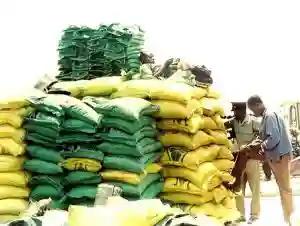Local Fertiliser Industry Producing 15% Of National Demand

Capacity utilisation in Zimbabwe’s fertilisers industry has fallen drastically, with local companies only able to satisfy about 15% of the national demand.
This came out in a new report by University of Zimbabwe economics lecturer, Albert Makochekanwa which was commissioned by the Ministry of Industry and Commerce.
According to the report, the low capacity is attributable to power cuts, limited working capital, limited foreign currency to import critical raw materials and high interest rates which discourage the companies from borrowing, among other problems.
The other major problems facing the fertiliser industry include the non-availability of key raw materials in bulk quantities in the local market, smaller profit margins and the non-availability of fertiliser endowments. Part of the report reads:
On average, actual annual production is about 90,000mt which only satisfies 15% of annual national demand.
Evidence shows that idle capacity is mainly due to the non-allocation of foreign currency to import ammonia gas which is one of the major ingredients in the production of fertiliser.
The average fertiliser manufacturing or production capacity utilisation for the year 2022 in the fertiliser sector was 52%, while the figure ranged between 80% on the upper bound and 38% on the lower bound.
According to the report, the fertiliser companies produced about 90 000 metric tonnes in 2022 against a national demand of about 780 000mt.
Out of the 780 000mt that are required to meet national demand, 380 000mt are top dressing, and 400 000mt are basal fertilisers (compounds and blends).
The consumption of 380 000mt of top-dressing is further divided into top-dressing direct application (that is ammonium nitrate (AN)) and input into compounds (urea).
The consumption of 400 000mt of compounds is further divided into phosphate, potassium and AN.
The low capacity utilisation has resulted in Zimbabwe becoming a perennial importer of fertiliser.
More: Pindula News





